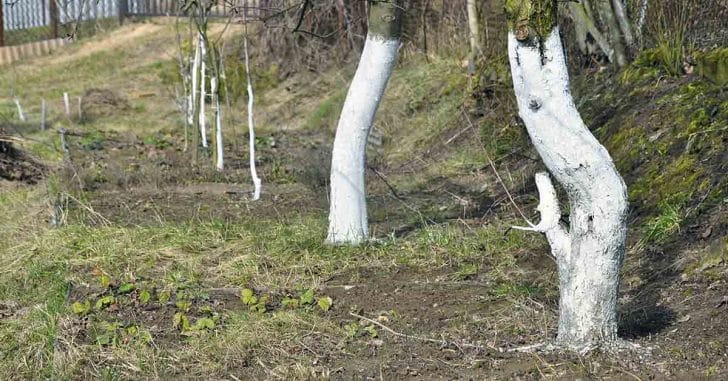This practice isn’t about aesthetics; rather, the paint serves to protect trees during their development.Nature is brimming with vivid colors. Trees alone display a wide range of hues, from the pink of cherry blossoms to the deep green of pines and the yellow of maple leaves. However, some trees have white bark—unlike naturally white-barked birches—due to human-applied paint.Why Are Some Trees Painted White?
You may have noticed that the lower trunks of some trees are painted white. This is to shield the bark from sunscald, a condition similar to sunburn in plants. Sunscald commonly occurs in winter when fluctuating temperatures—from cold nights to sunny days—can damage the bark. The white paint helps prevent the tree from overheating and cracking. Cracked bark can expose the tree to diseases, fungi, and pests.“This type of painting is usually done on young, thin-barked residential trees or in orchards,” explains Christopher Evans, an extension forestry and research specialist at the University of Illinois Urbana-Champaign. “The white paint helps moderate daytime heating of the bark and reduces the risk of sunscald.” This treatment is typically only needed for younger trees until they become more resilient. Additional Reasons for Painting Trees
You might also see trees with various paint markings. While white paint serves to protect bark, other colors and patterns convey different instructions. For example, some trees are marked to indicate disease, the need for removal, or pruning requirements. “Paint marks trees in a subtle way,” says Ken Fisher, assistant forester for the Boulder Parks and Recreation Department. “Many people don’t even notice, but it alerts our contractors to the specific tree in question. We’ve been using paint dots for around 25 years, so some trees might have several dots.” However, different cities may have their own codes, so colors like red or purple could signify different things depending on the location.In forests and nature trails, you might encounter paint jobs indicating hazardous or safe trees. They can also mark private hiking trails or provide environmental information. “In some areas, trees with nests of rare or endangered species are marked,” notes Evans. “For example, in the Southern United States, nests of the federally endangered red-cockaded woodpecker are typically marked with a white paint ring.” However, it’s essential to check local guidelines before making assumptions, as there is no universal standard for marking paint in forestry. Some symbols and colors are more widely understood, like an X, which often signifies a tree to be cut, and numbers indicating a tally before a harvest. In many states, purple paint marks private property.
How to Paint Trees White Painting young trees white has long been a method of protection, though some experts question its effectiveness. While the paint can help prevent young bark from overheating, the wrong type of paint can cause severe damage. Therefore, it’s crucial to choose the right product: water-based latex paint diluted with one gallon of latex to four or five quarts of water. Consider using a rodent repellent to prevent animals from gnawing on the trees. Avoid oil-based paint, as it can seal the bark and prevent the tree from absorbing oxygen. Opt for paints with an organic base to avoid harmful additives. Any light color will suffice, but darker shades should be avoided as they absorb more heat and can exacerbate sunscald. Once you have the right paint mixture, apply it with a paintbrush. Sprays tend to be less effective and don’t offer adequate protection. One coat should generally be sufficient unless the weather conditions are extreme. In areas with severe weather, reapply the paint annually. Overall, white paint is a simple and effective way to protect young trees as they grow.


